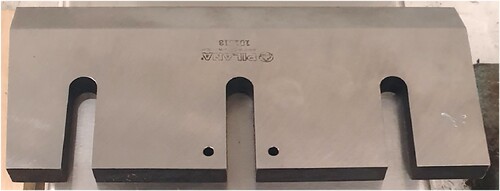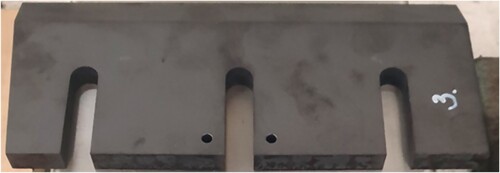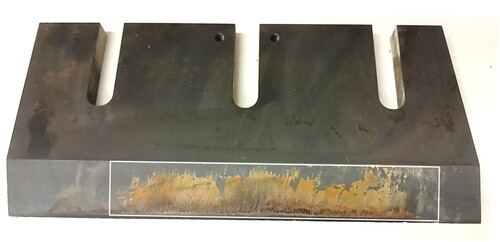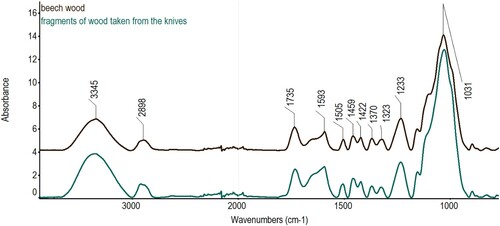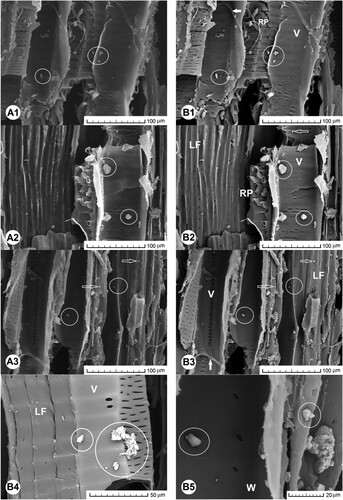Figures & data
Table 1. Characteristic of green beech wood material: moisture, density, extractive content (EXT), lignin content (LIG), holocellulose content (HOLO), cellulose content (CEL), hemicellulose content (HEMI).
Table 2. Chemical composition of steel X48CrMoV8-1-1.
Table 3. Properties of the coating with CROSAL plus stated by the manufacturer.
Figure 3. Samples of uncoated (left) and coated knives (right) after the test of resistance to abrasive wear and measurement of HRC hardness.

Table 4. Results of the resistance test to abrasive wear and HRC hardness measurement.
Table 5. Gravimetric analysis of knives and wood fragments taken from knives.
Figure 5. Evaluation of the primary surface of the knife, cutting edge (grey area), before and after chipping. Green points show positive (+) or negative (–) deformations.
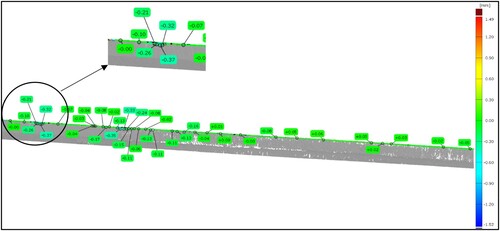
Table 6. The elemental analysis of green beech wood and the wood fragments taken from the knives.

